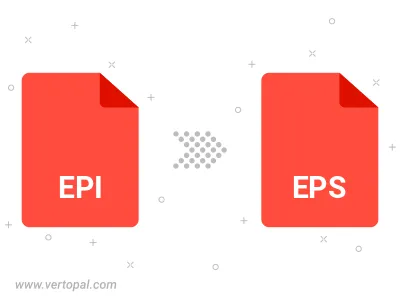Convert EPI to EPS
Convert EPI images to EPS format, edit and optimize images online and free.

The EPI file extension stands for Encapsulated PostScript Interchange, a format developed by Adobe in the late 1980s. It facilitates the integration of vector graphics and text into documents for high-resolution printing. EPI files, a variant of EPS, are primarily used in graphic design and desktop publishing to ensure consistent and scalable image quality. This format employs Adobe's PostScript language to describe the appearance of a single page, making it ideal for embedding illustrations in various documents.
EPS, or Encapsulated PostScript, is a graphics file format used in desktop publishing and printing applications. Created by Adobe Systems in 1987, EPS files can contain both vector and bitmap graphics, making them versatile for various design tasks. They are commonly used for high-resolution printing of illustrations, logos, and complex graphics. EPS files are supported by most graphic design software and ensure consistent output quality across different devices and platforms. Their encapsulated nature allows them to be included within other PostScript documents, preserving the graphic's integrity and detail.
Choose the EPI image you wish to convert.
Pick any EPI to EPS tools if you need to edit your EPI file, then click the Convert button.
Once the convert is complete, you can download the final EPS file.

To change EPI format to EPS, upload your EPI file to proceed to the preview page. Use any available tools if you want to edit and manipulate your EPI file. Click on the convert button and wait for the convert to complete. Download the converted EPS file afterward.
Follow steps below if you have installed Vertopal CLI on your macOS system.
cd to EPI file location or include path to your input file.Follow steps below if you have installed Vertopal CLI on your Windows system.
cd to EPI file location or include path to your input file.Follow steps below if you have installed Vertopal CLI on your Linux system.
cd to EPI file location or include path to your input file.